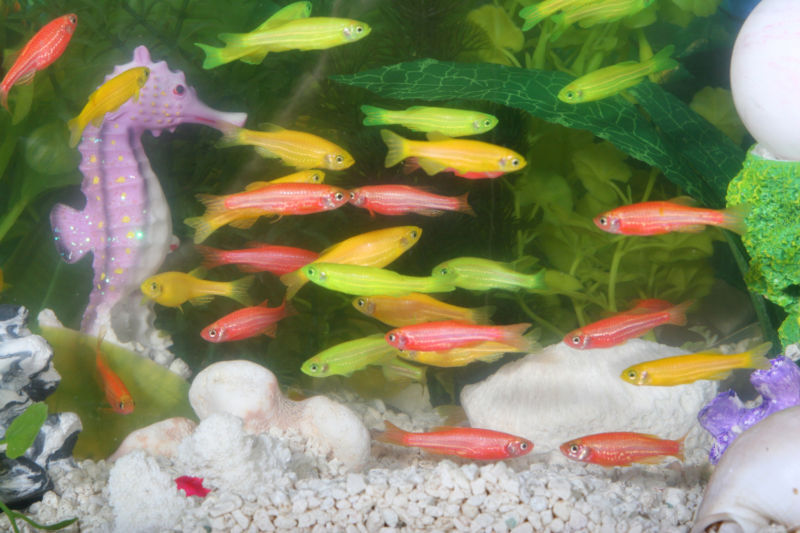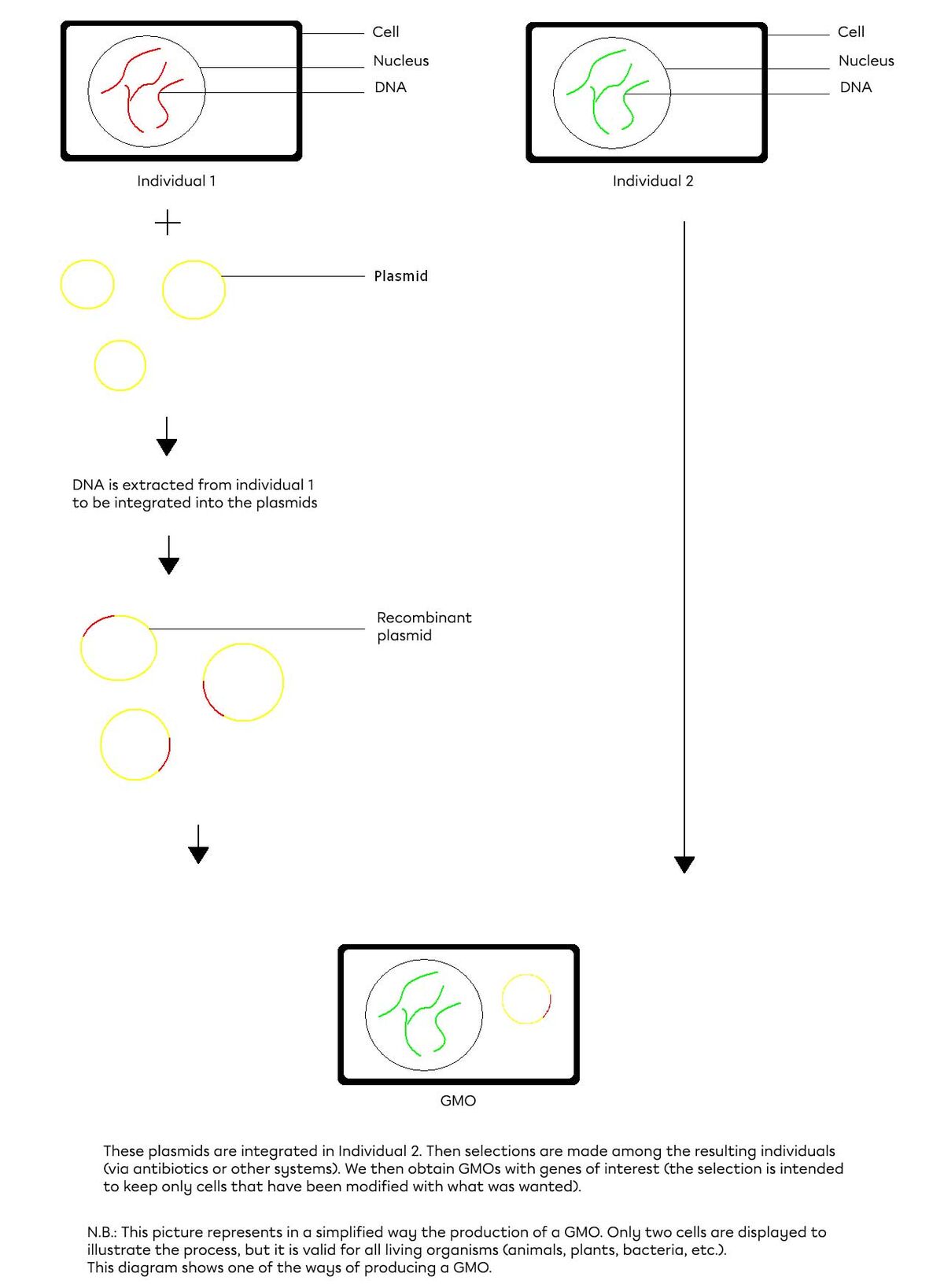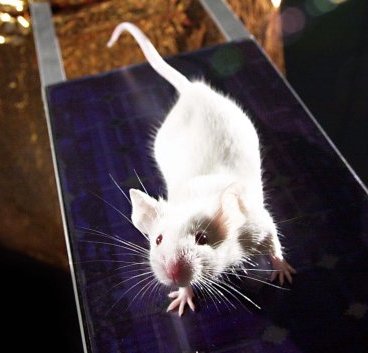A genetic transformation is the modification of the DNA of a species by the removal, modification, or introduction of certain genes.
Nowadays, it is possible to modify certain characteristics of a species by making a change in its genetic information. This can be done by adding one or more genes from the DNA of another species, or by removing or modifying some already present genes. These changes are called genetic transformations. These transformations produce living organisms with characteristics that are not naturally present.
A new species of aquarium fish has been created by introducing a jellyfish gene into a common type of fish to provide it with a fluorescent colour.

In order to introduce a foreign gene into an organism, scientists use the transgenesis process. The techniques differ depending on the organisms, but the steps to follow are similar.
-
Identification of a need or desire for improvement in a living organism.
-
Identification of a characteristic that can meet the need or desire expressed in a donor organism.
-
Localization of the gene responsible for this characteristic in the DNA of the donor, which is called the gene of interest.
-
Extraction of the gene of interest from the donor organism.
-
Introduction of the gene of interest into the cells of the organism to be modified.
-
Selection of organisms for which the genetic modification has been successful.

The complexity of transgenesis depends mainly on the type of organism to be modified. This process is carried out more easily in bacteria than in more complex organisms, whether they are animals or plants.
A GMO (genetically modified organism) is a living organism whose DNA has been modified by introducing one or more genes to provide the organism with characteristics that it would not naturally possess.
Living organisms resulting from a genetic transformation are qualified as genetically modified organisms (GMOs) or even transgenic organisms. Theoretically, all living organisms can be genetically modified. However, it is easier to modify unicellular organisms than multicellular organisms. When the characteristics are properly introduced into the DNA of an individual by genetic transformation, these characteristics will be transmitted to the descendants who will also be qualified as GMOs.
An organism is generally modified in order to provide it with new characteristics that may benefit humans. For example, it may be advantageous to increase the tolerance to low temperatures of some plant species to limit agricultural losses. GMOs have various applications in several areas.
|
Agronomy
|
Food
|
|
Medicine
|
Industry
|
Many GMOs have been developed in the laboratory for various purposes. However, few of these organisms have been approved for commercial use; they are more likely used for research purposes. In terms of plants, a large proportion of the corn, soybeans and canola grown in Canada are GMOs. These plants are mainly intended for animal feed. Producing transgenic animals for consumption purposes is currently prohibited in Canada.
The long-term environmental and health repercussions of GMOs are not yet fully known as this is a recent technology. It will take several more years before being able to accurately assess the benefits and harms of GMOs. In the meantime, more and more organizations are calling for mandatory labeling of foods containing GMOs so that people can make an informed choice.



